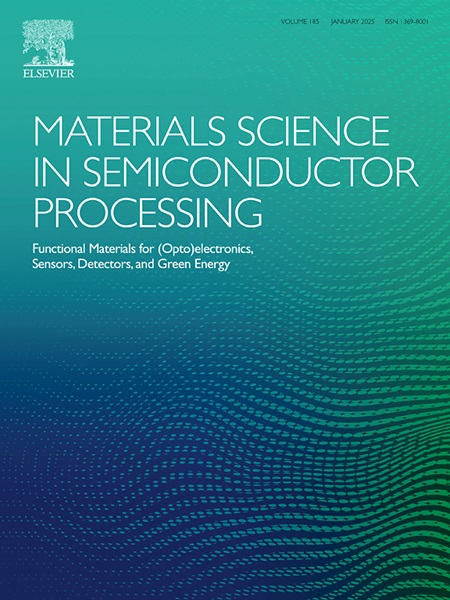纳米压痕诱导电化学刻蚀制备锥形凹坑
IF 4.2
3区 工程技术
Q2 ENGINEERING, ELECTRICAL & ELECTRONIC
引用次数: 0
摘要
锥形微坑在空间探索、监视系统、生物医学工程、地球科学研究、国防技术和材料加工等广泛的先进应用中具有重要意义。然而,为了满足日益增长的先进光学技术的需求,锥形微凹坑的制备方法仍需进一步研究。纳米压痕与电化学刻蚀相结合在微坑制造中表现出强大的能力;然而,这种方法的潜在机制尚不清楚,这阻碍了微坑制造的进一步发展。本研究提出了一种利用协同纳米压痕和电化学蚀刻技术制造锥形微凹坑的可控策略。关键研究结果表明,纳米压痕诱导的晶体损伤区是电化学蚀刻的首选起始点,可以通过调整机械参数(正常负载、周期数)和电化学条件(电压、时间)来精确控制微坑尺寸。该方法克服了传统单机构方法的局限性,实现了对锥形坑直径和深度的独立调节。该工艺与PDMS纳米印迹技术相结合,可以在聚合物表面上实现高保真度和快速复制锥形分子阵列。本文章由计算机程序翻译,如有差异,请以英文原文为准。
Fabrication of conical pits via nanoindentation-induced electrochemical etching
Conical micro-pits are of significant importance in a wide range of advanced applications, including space exploration, surveillance systems, biomedical engineering, earth science research, defense technologies, and material processing. However, the fabrication methods of conical micro-pits still need to be further investigated to meet the increasing demand for advanced optics. Nanoindentation combined with electrochemical etching demonstrates powerful ability in micro-pits manufacturing; however, the underlying mechanisms of this method remain unclear, which hinders further development of the fabrication for micro-pits. This study develops a controllable fabrication strategy for conical micro-pits via synergistic nanoindentation and electrochemical etching. Key findings reveal that nanoindentation-induced crystal damage zones act as preferential initiation sites for electrochemical etching, enabling precise control of micro-pit dimensions by tuning mechanical parameters (normal load, cycle number) and electrochemical conditions (voltage, time). This method achieves independent regulation of conical pit diameter and depth, overcoming the limitations of conventional single-mechanism methods. Integrated with PDMS nanoimprinting, the process enables high-fidelity and rapid replication of conical pist arrays on polymer surfaces.
求助全文
通过发布文献求助,成功后即可免费获取论文全文。
去求助
来源期刊

Materials Science in Semiconductor Processing
工程技术-材料科学:综合
CiteScore
8.00
自引率
4.90%
发文量
780
审稿时长
42 days
期刊介绍:
Materials Science in Semiconductor Processing provides a unique forum for the discussion of novel processing, applications and theoretical studies of functional materials and devices for (opto)electronics, sensors, detectors, biotechnology and green energy.
Each issue will aim to provide a snapshot of current insights, new achievements, breakthroughs and future trends in such diverse fields as microelectronics, energy conversion and storage, communications, biotechnology, (photo)catalysis, nano- and thin-film technology, hybrid and composite materials, chemical processing, vapor-phase deposition, device fabrication, and modelling, which are the backbone of advanced semiconductor processing and applications.
Coverage will include: advanced lithography for submicron devices; etching and related topics; ion implantation; damage evolution and related issues; plasma and thermal CVD; rapid thermal processing; advanced metallization and interconnect schemes; thin dielectric layers, oxidation; sol-gel processing; chemical bath and (electro)chemical deposition; compound semiconductor processing; new non-oxide materials and their applications; (macro)molecular and hybrid materials; molecular dynamics, ab-initio methods, Monte Carlo, etc.; new materials and processes for discrete and integrated circuits; magnetic materials and spintronics; heterostructures and quantum devices; engineering of the electrical and optical properties of semiconductors; crystal growth mechanisms; reliability, defect density, intrinsic impurities and defects.
 求助内容:
求助内容: 应助结果提醒方式:
应助结果提醒方式:


